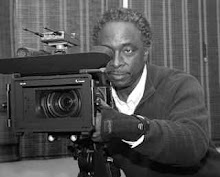Continuing with my Trees series themes of dormancy, death and decay, I visited the Charles River area around Blue Heron Bridge. A cold wind wound around my gloves, making each decision to remove them to capture an image costly.
The river is very narrow and shallow at this location -- perfect for dead and rotting trees.
On the way, I noticed the spectacularly lit scene captured in TradHem. The title is a contraction of two Swedish words -- "Trad" for tree and "Hem" for home. I chose the title because this tree is in front of the Scandinavian Living Center in West Newton. I love how this mighty specimen dwarfs the "living center." Pshaw. Mature trees of this size, which provide an ecosystem for thousands of plant and animal species, have forgotten more than we'll ever know about "living."
Down by the river, the scene of LimbDown presented itself. We think of trees as aerial structures, part of our skyscape. This limb, felled so ignominiously in the water and subsurface muck, struck me as poignant.
This image has many other elements -- the shadow of the living limb on the right is the Derridian "trace" of a tree, and perhaps mocks or sympathizes with the downed limb. Their two shadows meet in the water, where they are equals. The ice sheets indicate that the water level was recently higher; and other trees are reflected in the water near the top of the frame, like a Monet canvas. I emphasized the interplay of light and dark by partially desaturating the image. Taking this image nearly brought tears to my eyes. I understand that seeing a downed limb as sad is an all-too-anthropomorphizing take on what is part of nature's cycle of life. But I can't help it. So there...
CathEdral continues an element of the Trees series -- the squirrel's eye view. My daughter and I have been fascinated by the seemingly endless population of squirrels in our town. My Trees series attempts to see them not as quaint and curious creatures underfoot but as an incredibly successful aboriginal population. The exposed natural flying buttresses in this image remind me of our trip to Notre Dame. I angled the camera so as to reveal the stratospheric height of this tree -- a connection to the divine, perhaps. The various holes, rot, damage and other incursions to this tree serve only to reveal to us its true nature -- as a giant ecosystem.
Large holes in trees are darkly intriguing. PanTree is an example. In that deep, dank, odiferous and slimy maw, what (hopefully) sharp-toothed, exotic creature might be in there, zealously guarding its nest? My inner 13-year old was dying to whip off my glove and plunge my camera in shoulder deep and take a flash photo. My outer adult vetoed this idea in no uncertain terms. Visions of rabies, lockjaw and Old Yeller being put down danced in my head.
Instead, I shot this one from the rim of the hole. After looking at the image at home, I realized that if turned upside down, it made a perfect pair of tree pants. Hence, PanTree. A word that also evokes what trees are to many creatures -- a source of food.
Again, squirrels live in a three-dimensional world unlike our own squashed two dimensions. Squirrels move not only left, right, back and front, as we do -- but also up and down, with what seems to us to be preternatural speed. "Up" and "down" may be concepts that are quite different for them...if they even have such expressions in squirrel-speak.
Holes like this one are stunning in their almost furniture-like smoothness, especially when juxtaposed against the rough bark outside. Wow. ###
Wednesday, February 17, 2010
Subscribe to:
Post Comments (Atom)





No comments:
Post a Comment